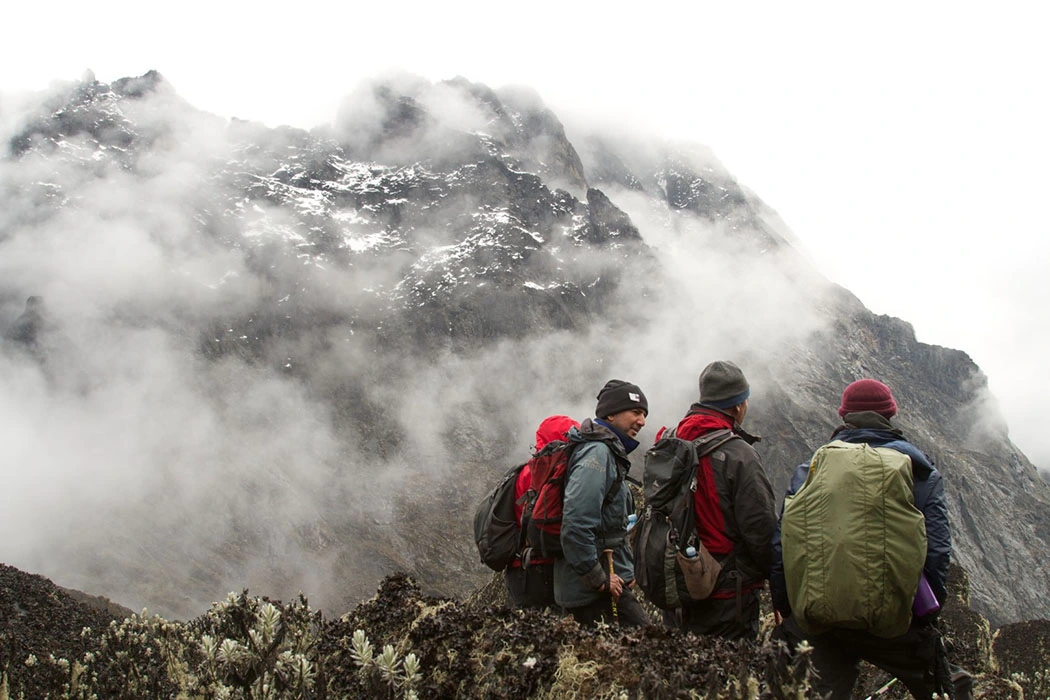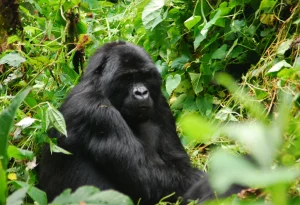What to pack for a mountain hike
Hiking in Uganda is an exhilarating activity that offers you the opportunity to explore various ecosystems, unique wildlife encounters, and stunning vistas. Every walk provides a different landscape, weather, and challenges, from the foggy Rwenzori Mountains, popularly called the “Mountains of the Moon,” to the verdant Bwindi Impenetrable Forest and the breathtaking waterfalls in Sipi. It’s crucial to pack appropriately for your trip in order to guarantee comfort, security, and enjoyment. What to pack for a mountain hike. This comprehensive guide will help you get ready for an amazing Ugandan hiking adventure.
The climate of Uganda varies substantially by geography, elevation, and season. At higher elevations, particularly in the Rwenzori Mountains, temperatures can be quite frigid while being close to the equator. Choosing clothes that are both versatile and weatherproof will help you have a comfortable trekking experience. What to pack for a mountain hike
Layered Clothes
When trekking in Uganda, the skill of layering is essential. To keep perspiration off your skin, start with a base layer that wicks away moisture. An outer layer that is both waterproof and windproof will protect you from chilly winds and unexpected rain, while a mid-layer, such as fleece, will offer warmth and insulation. It is a good idea to pack extra layers, such as down coats or thermal trousers, because the Rwenzori Mountains, in particular, can be damp and chilly all year round.
Pants and shirts with long sleeves
Trekking in forests and jungles requires protection from thorny plants, bug stings, and intense sunshine, so long-sleeved shirts and pants are a must. Select lightweight, breathable clothing that dries fast to keep you protected and cool.
Shoes and Socks for Hiking
Purchase high-quality moisture-wicking socks to avoid blisters and warm socks for hikes at higher elevations. Steer clear of cotton and use materials like merino or synthetic wool, which dry quickly and don’t smell.
-
Footwear Essentials
Uganda’s varied terrain necessitates the use of strong, supportive footwear. Hiking with the proper footwear will significantly improve your experience, whether you’re trekking on muddy paths or climbing rocky terrain.
Waterproof Hiking Boots
A pair of hiking boots with a decent grip that are waterproof is crucial because Uganda has frequent rains. To avoid injury on uneven ground, look for ankle support. Since new boots might be stiff and painful at first, break them in thoroughly before your trip to prevent blisters.
Gaiters
They are quite helpful in places with a lot of bush, such as Bwindi and Kibale. Particularly in the rainy season, they shield your legs and feet from mosquitoes, dirt, and thorns. Gaiters also prevent water and mud from soaking into your boots, which is helpful on some wet routes.
Sandals or Lightweight Shoes
It’s nice to change into cozy sandals or lightweight shoes around the camp after a strenuous day of trekking. They let your feet relax and breathe, which helps lessen discomfort and avoid blisters.
-
Accessories and Protective Gear
Having protective gear on hand guarantees that you’ll be ready for any challenges or unexpected events that may arise while hiking. Having the appropriate gear is essential when hiking in Uganda because you will be dealing with both tropical heat and alpine cold.
Sunglasses and a hat
You can protect yourself from the harsh and sometimes merciless tropical sun by wearing a hat with a wide brim. UV-blocking sunglasses are crucial for eye safety, particularly when hiking at high elevations where the sun can be considerably more powerful.
Lip balm and sunscreen
Uganda’s sun may be quite intense, particularly at higher elevations. Keep an SPF-containing hydrating lip balm on hand to keep your lips from drying out, and use a high-SPF sunscreen frequently to protect your skin from sunburn.
Insect Repellent
In Uganda’s tropical regions, insects can pose a health danger in addition to being an annoyance. Although the risk of malaria is normally lower in the highlands, it is nevertheless advisable to exercise caution because mosquitoes, in particular, are common there. For extra protection, think about wearing clothing treated with permethrin and pack a dependable insect repellent, ideally one that contains DEET.
-
Supplies for Safety and First Aid
In isolated locations where prompt medical assistance may not be easily accessible, having a well-stocked first aid bag can save lives. Despite its allure, Uganda’s wildness can be dangerous due to the possibility of cuts, blisters, and insect bites.
Individual First Aid Kit
Include Band-Aids, antiseptic wipes, blister treatment, pain killers, and any personal medications in your basic first aid bag. Add gauze, adhesive tape, and an emergency blanket in case of severe cold for longer excursions.
Emergency Whistle and Flashlight
Two essential safety equipment are an emergency whistle and a flashlight (ideally a headlamp for hands-free operation). While a flashlight ensures visibility during early morning or late evening excursions, particularly in deep forests where daylight fades quickly, a whistle can be used to signal for assistance. What to pack for a mountain hike
-
Other Essential Items
Although they are not necessary, these extras can greatly improve your hiking experience by bringing convenience and fun.
Binoculars or a camera: The wildlife and scenery of Uganda are very photogenic. You may record those special moments or monitor animals from a distance without upsetting them by using binoculars or a lightweight camera. Just make sure that your camera is shielded from dust and moisture.
Power Bank and Extra Batteries
Power sources might not be available in isolated locations. While extra batteries guarantee that your flashlight or camera stays functional during your trip, a fully charged power bank will keep your phone and other gadgets operating.
Lightweight Dry Bag
Especially during rainy or river crossing conditions, a dry bag guards against water damage to documents, electronics, and other belongings. Additionally, it keeps your things in order inside your primary backpack.
Concluding remarks
The terrain, the weather, and your demands must all be carefully considered while packing for a hiking vacation in Uganda. You’ll be ready to face Uganda’s varied landscapes with comfort and confidence if you adhere to these packing tips. Keep in mind that every hike is different, so modify your packing list according to the season, the length of the hike, and your particular destination. In the middle of Uganda’s breathtaking nature, embrace the experience, be careful, and prepare to create lifelong memories.




